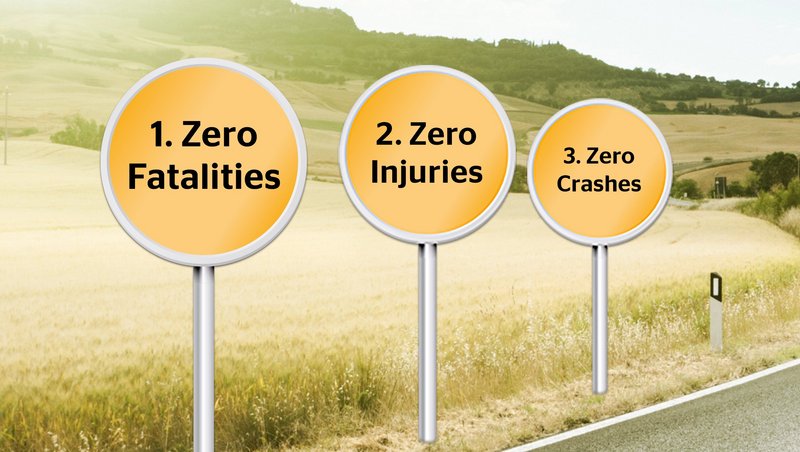Heading for Vision Zero with Continental
Vision Zero: Zero Fatalities. Zero Injuries. Zero Crashes.
Modern vehicles that are equipped with driver assistance systems and safety technologies such as ABS or ESC help to avoid crashes and thereby save lives. But they can only leverage their full potential out on the road in conjunction with the products that forge the actual contact with the road surface: the tires.
It’s only the combination of advanced driver assistance systems and premium tires that puts drivers in a position to actually benefit from top level safety out on the roads. Continental is the only company that can offer high-tech solutions in both product areas from a single source. That puts the company one vital step ahead of competitors, who have only one thing or the other in their portfolios, but not both.
To give a concrete example: ABS has to ensure that a vehicle remains under control and steerable in an emergency and at the same time that the grip potential of the tires is fully exploited. That’s why Continental is working to bring out that potential more effectively and leverage the interplay between the ABS control unit and the various tire specifications to the full. The reproducible test results that we need to validate the concept have been obtained in the Automated Indoor Braking Analyzer (AIBA), a fully automated test facility for car braking tests. Just how important Vision Zero is for Continental is further illustrated by joining commitment to the Global NCAP ‘Stop the Crash’ campaign, which is scheduled to run for three years. Global NCAP is the umbrella organization for the nine independent consumer organizations (NCAPs) which assess the safety of new vehicles around the world. The campaign is built around four collision prevention technologies:
ESC
Electronic Stability Control prevents crashes
ESC is widely held to be one of the most important collision avoidance systems currently available and the most significant advance in vehicle safety since the introduction of the seat belt. This anti-skid technology has already saved tens of thousands of lives. On dry, wet, or slippery roads if the vehicle starts to skid, ESC corrects the slide by reducing engine torque and braking individual wheels to bring the vehicle back on course. The system uses sensors to continuously monitor the stability of the vehicle. When an unstable state is detected, ESC responds in milliseconds and stabilizes the vehicle.
AEB
Autonomous Emergency Braking is a far-sighted helper
Autonomous emergency braking (AEB) is an advanced safety technology that can help drivers avoid or mitigate collisions with other vehicles or pedestrians. Multiple real world studies – including a recent report from the Insurance Institute for Highway Safety in the United States – show that AEB technologies can reduce injury claims by as much as 35 percent. AEB systems use forward looking radar, lidar and camera systems or a combination of these sensors to help quickly and reliably avoid or mitigate collisions with vehicles, pedestrians or other obstacles. There are three production-ready solutions in place – for pedestrian protection, urban and inter-urban traffic.
Anti-lock brakes
Motorcycle ABS saves lives
Around one in six fatalities that occur on the road in Brazil and in the European Union involves a motorcyclist – in India and China the proportion is even higher. ABS for motorcycles can offer greater safety for motorcycle riders. According to the Insurance Institute for Highway Safety in the United States, the rate of fatal crashes is 31 percent lower for motorcycles equipped with optional ABS than for those same models without ABS. Today ABS is available for all types of motorcycles – from scooters and mopeds to heavy-duty tourers and powerful motorcycles – and in all markets.
Tire Safety
Tire pressure and tread depth are decisive
Tires are the only point of contact between a vehicle and the road. In a critical situation, it is the tire that determines whether the vehicle can stop in time or stay safely on course through a corner. Studies from different tire manufacturers have shown that more than 50 percent of all cars are permanently driven with underinflated tires. And yet underinflated tires present a greater risk of crashes. The safety performance of cars is heavily dependent on the residual tread depth of the tires. The legal limit for minimum residual tread depth is 1.6 mm – all over the world. This is far too low for maximum road safety. That’s why Continental recommends a minimum residual tread depth of 3 mm for summer tires and 4 mm for winter tires.




